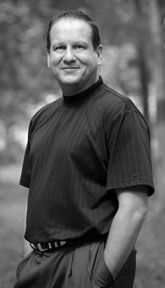A fewweeks ago, we were exposed to just what little time we have to make a first impression on a guest: 7 seconds. That’s not much time to impact the thoughts and emotional reaction of these guests.
Every “touch” point during a guest experience has the opportunity to build on the previous interaction, or to destroy it. Every encounter and milestone of this first experience is critical — like building blocks. Without a strong foundation, the rest of the blocks find themselves less stable and tentative.
Assuming your first-time guest has made the conscious decision to pull onto your site, their first 7-second encounter will be in your parking lot. Their first impression starts at the entrance of the parking lot and may continue until they reach your front door.
Too often, church leaders think the parking lot is irrelevant — just a place to store the means of transportation used by the congregation. They see it as just commonplace instead of a touch point and a place to impact people (thus, souls).
Big mistake!
As you think about your parking experience, here are three things that are foundational in making this the best 7 seconds possible:
1) Have a parking ministry. This is a great way to accomplish two significant ministry initiatives for two very different groups.
The first group this impacts is obvious: the guest. A vibrant, proactive, enthusiastic and welcoming group of people can lift your spirits and diffuse some of the anxiety that a guest may be experiencing. Seeing happy people waving, smiling (yes, Christians should smile!) — even acting crazy — has more impact on others than you realize.
The second group this impacts is your team. Many of the churches we serve have met in schools or other temporary facilities for years, and now they have a facility in which to gather. During those years of being a “church in the box,” they set up teams that would show up on Saturday night or Sunday morning, at the crack of dawn, to set up for the worship that day. These people have developed a bond and a kinship that’s infectious. The setup team has actually become their own “small group,” and they love doing life together.
But, what happens when you don’t need to do setup every week? What do these people do?
I’ve been on setup teams with guys who weren’t yet Christ-followers; others who were new followers; and others who were more comfortable doing physical labor. To not provide a similar ministry opportunity once your church occupies its own space — one which doesn’t require setup — robs them of a ministry opportunity they’re comfortable performing. That can drive them away or leave them feeling unnecessary. By starting or expanding a parking ministry, you open up a new opportunity for many of these people to serve.
2) Frame it as a ministry, not a mundane task. Don’t frame the “parking ministry” as just a functional activity, but rather as an opportunity to impact people’s lives.
The aforementioned functions are important for the reasons given. But, if you believe that prayer is impactful, then your parking team should be praying for each of the cars entering the lot. Maybe it’s for their first experience. Maybe it’s for an issue they’re confronting at that moment. Maybe it’s for peace — something they might not have experienced on the way to church, when the family got in a fight in the car.
The parking lot should be blanketed with praying people. It should be the largest prayer chapel on your campus. Help set the tone for the rest of their experience, and see what happens.
3) Prioritize function and safety. Church parking lots aren’t like retail centers, even though many designers and civil engineers lay them out as if they were. In retail or other commercial applications, most of the vehicular traffic is spread out over the entire day.
But, a church parking lot is much more similar to an event venue — more like a concert venue or theme park or sports complex. You have a lot of cars trying to enter and/or exit the site at the same time. And, if you have back-to-back worship experiences, with 15 minutes or less between services, you have a real issue.
Having a succinct plan for how to best get cars on and off your site will reduce the amount of stress for the drivers. It will also provide a safer environment. If drivers aren’t attempting to navigate the parking lot on their own, the likelihood of mishaps is greatly reduced — not just for vehicular traffic, but also for pedestrians.
Please don’t regard your sea of asphalt as just a place to park vehicles; be intentional (we’ve talked about this before), and make it a safe environment that’s bathed in prayer and enhances your guests’ experience.
Sounds like a winner to me.
 Tim Cool is project executive at Visioneering Studios in Charlotte, NC, and founder of Cool Solutions Group. Since 1986, Cool has served the church community in the areas of construction, facility planning and facility management. He can be reached at tcool@visioneeringstudios.com.
Tim Cool is project executive at Visioneering Studios in Charlotte, NC, and founder of Cool Solutions Group. Since 1986, Cool has served the church community in the areas of construction, facility planning and facility management. He can be reached at tcool@visioneeringstudios.com.


